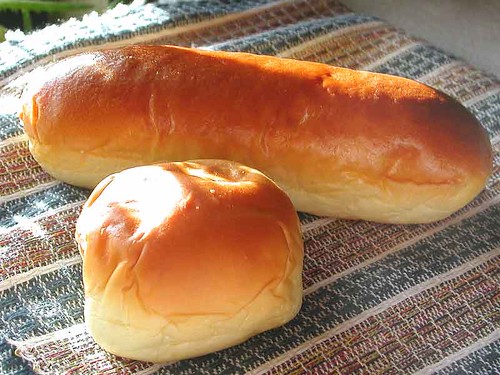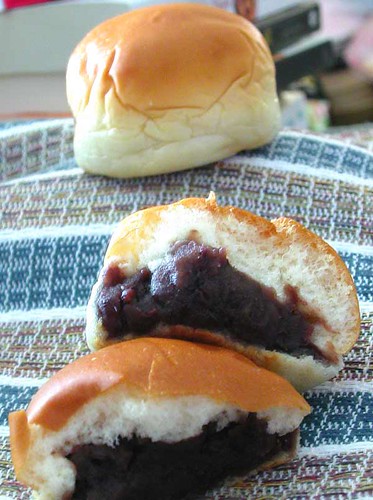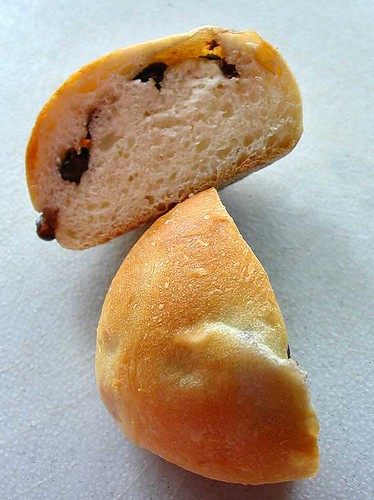
japanese bread
i think some form of bread most likely existed in japan before the arrival of the portuguese, as something brought over from china or the chinese, but damned if i can find any proof of that. no matter, this is about the portuguese. the 16th century saw the sleepy japanese fishing village of nagasaki transformed into a bustling seaport when in 1571, portuguese sailors set up a trading post with the cooperation of the local daimyo. the traders brought the west to japan, most notably guns and God, but also culinary delights like the concept of deep-frying, and baking bread and cake. yeah. grease and carbs. you can smell the downfall already.
despite its early arrival, the first attempts at japanese breadmaking were dismal failures, due to the scarcity of wheat flour, yeast and sugar. bread was hard, salty, and sour, and did not appeal to the japanese palate. fast forward several hundred years to the meiji period. the portuguese have been kicked out, returned, the daimyo taken out of power, and the feudal system dismantled. samurai are stripped of their status, and left to their own devices. what is a ex-bureaucratic swordsman with a penchant for poetry to do?
for samurai yasubei kimura, the answer was to devote his energy towards baked goods, and he opened bakery kimura-ya in tokyo sometime in 1871. he originally based his product on dutch-style breads, as his chief baker had worked in a dutch household, and he catered to the western foreigners in the city. however, he and his family strived to develop a product that japanese would take to, and eventually they hired kodo katsuzo, who created a recipe using the kasu-zuke--sake lees, which are a fermented by-product of sake production--as a leavening agent, and a filling of anko or koshi-an, or mashed red bean paste, which appealed to the local population, and anpan was born.
anpan
in 1875, the bakery presented their creation to emperor meiji who was so delighted by it that he soon requested anpan on a daily basis. with this ringing endorsement, anpan and other breads became popular throughout the nation. (now, god bless john belushi, but dontcha think this is the samurai flick tom cruise shoulda done?)
homemade anpan (i don't like too many beans in mine)
bread is so popular in japan today, that ironically, bakers find they must use rice flour in their baked goods to subsidize declining rice consumption. i find this somewhat shocking, as would anthony, as i believe he holds little regard for japanese baked goods. i myself rather like anpan, but don't love it. since so many bakeries here and in asia have it, you wouldn't normally think to make it, but i have found a rather good recipe for it. the bread is less fluffy and cottony than commercial varieties, and while distinctly less european, the flavour and texture are distinct if somewhat disconcerting. it is chewy and sweet, not unlike a stale marshmallow. despite this curious description, it is unique, and has an added character that makes it a more japanese creation than not.
20050322
how the east was won, pt. 2: samurai bakery
Subscribe to:
Post Comments (Atom)




3 comments:
3/23/2005 10:14:00 AM
Hate to be seen as inmpugning Japanese bakers, as with most things I'm sure there are some exceptional one's there. The sad fact is most of the bakers are making the bread equivalent of velveeta, and don't get me started on the cheese, or the wine for that matter. I think it's a universal tendency to enjoy lame versions of other culture's foods.
On a cutish note the Japanese word for crusts is pan no mimi or bread's ears.
9/05/2007 04:01:00 AM
9/06/2007 11:03:00 PM
here's the link!
Post a Comment